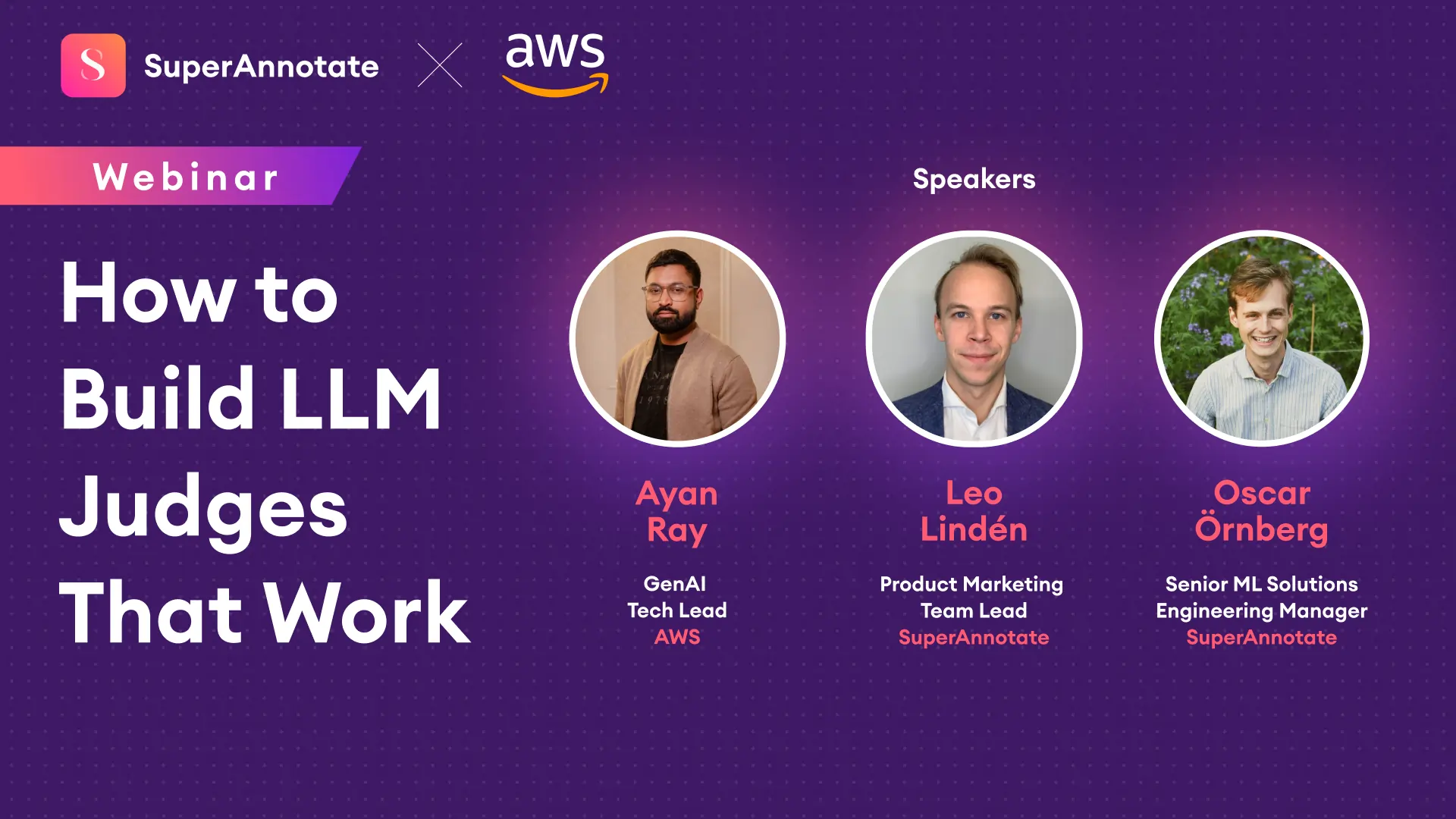As the year is about to end we’ve decided to gather up and discuss how 2021 went in terms of computer vision and what’s about to happen next. There’s no doubt that computer vision, machine learning (ML), and artificial intelligence (AI) are growing at a rapid speed with more and more real-life applications emerging every day. New tendencies, research vectors, and trends come about in as short as a year. 2021 certainly was a great success for SuperAnnotate – we grew our team and enhanced our product significantly. In the last webinar of this season, Oscar, our AI solutions lead, and Vahan, our CTO, shared their experience and projections and answered some of your questions.

Computer vision trends for 2022
Below, we’ll give a short intro to the computer vision trends for 2022. Additionally, the webinar is available for a free audit here.
Expansion of CVOps
As you may know, in computer programming DevOps is a set of practices and tools that aims to shorten the product development cycle and create sustainable delivery processes with high software quality. Similarly, MLOps and CVOps aim to do that when it comes to building ML or CV models. Essentially, CVOps refers to best practices for the development and deployment of a CV model to operationalize the process and allow for an agile model modification in terms of iteratively changing data. This is a relatively new term emerging in the industry and we believe that CVOps along with MLOps will become even more popular in the upcoming year. In the webinar, Vahan shares some statistics with major pain points that CVOps helps to solve, as well as accurate examples of what it’s like implementing CVOps in practice.
Data-centric AI
Every ML engineer knows this: “If 80% of machine learning work is data preparation, then ensuring data quality is the most important work of a machine learning team.”
You won’t simply be able to build a well-performing computer vision model without an efficient dataset. But what does efficiency mean here? The data-centric approach suggests that small amounts of data with clean labeling work better than large amounts of data with inconsistent labeling. So instead of focusing on the number of data points, you’d rather benefit from enhancing the annotation tools and quality.
Our speakers share 3 aspects of imperfect data that are often overlooked: bias, search and visualization, and versioning.
CV on the edge
Edge devices are real-life data processing devices that can process and communicate data on their own (on the edge). Because machine learning projects heavily depend on network and computing opportunities, edge computing is becoming more and more popular, solving the problems of network, accessibility, and latency. Some examples of edge devices include surveillance cameras, phones, and IoT devices. During the webinar, our CTO shares his projections on federative learning and how it works with edge devices. He also suggests some trends of computer vision on the edge such as SAR imagery, semi-supervised learning, and transformers.
Webinar questions
1. How was 2021 for SuperAnnotate?
Such an amazing year for us, we raised series A, and due to that, we’re able to grow our team and revenue. We’re looking forward to 2022!
2. Are these trends applicable to NLP initiatives?
The trends refer to machine learning at large and sure enough, they are applicable to the NLP.
3. What data versioning tools would you suggest?
At SuperAnnotate we have developed a tool for data versioning, including image, video, audio, and text data. Here’s how it works: it gives you an overview of your data so you can then explore and understand different parts of the dataset that you work on. You not only store data points but also explore and easily pull them down for comparison or benchmarking.
4. What is the dataset size of the versioning tool by SuperAnnotate?
Each project can handle up to 5000 data points (audio, text, image, video), and we recommend breaking larger projects into smaller pieces.
5. What pitfalls should we be aware of when building a computer vision product in 2022?
Our CTO suggests starting small instead of trying to solve the end problem right away because it’s an interactive and continuous process.
6. Which edge devices do you recommend?
We collaborate with OpenCV and they have released a device that’s tailored for AI applications – the OAK device. There are NVIDIA’s Jetson, Raspberry pie, and more.





